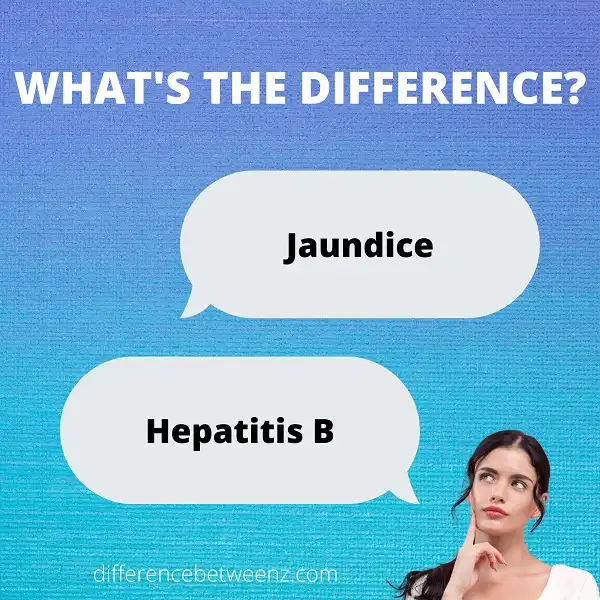Jaundice and hepatitis B are two conditions that can affect the liver. While they share some common symptoms, there are key differences between them. In this blog post, we will explore these differences and discuss the treatments for each condition. If you are concerned that you may be experiencing symptoms of either jaundice or hepatitis B, it is important to speak with a healthcare professional. Early diagnosis and treatment can help ensure a speedy recovery.
What is Jaundice?
Jaundice is a medical condition that is characterized by a yellowing of the skin and eyes. It is caused by an accumulation of bilirubin in the blood. Bilirubin is a substance that is produced when red blood cells are broken down. Jaundice can occur when there is an increased breakdown of red blood cells, or when the liver is not able to effectively remove bilirubin from the blood. Jaundice can be harmless, or it can be a sign of a more serious underlying medical condition. Treatment for jaundice typically involves treating the underlying cause. In some cases, special lights may be used to help break down bilirubin in the blood.
What is Hepatitis B?
- Hepatitis B is a viral infection of the liver that can cause serious health problems. The virus is spread through contact with the blood or body fluids of an infected person, and it can be passed from mother to child during pregnancy.
- Hepatitis B can lead to liver damage, cirrhosis, and liver cancer. It is important to get vaccinated against Hepatitis B, as there is no cure for the virus. Treatment focuses on relieving symptoms and preventing further damage to the liver.
- In most cases, Hepatitis B can be prevented by getting vaccinated. The Hepatitis B vaccine is safe and effective, and it is recommended for all adults who are at risk for the virus.
Difference between Jaundice and Hepatitis B
Jaundice is a yellowing of the skin, whites of the eyes, and mucous membranes. Jaundice is caused by an increase in bilirubin in the blood. Bilirubin is a yellow pigment that is formed when red blood cells are broken down.
- Jaundice can be a symptom of many different conditions, including liver disease, cancer, and diabetes. Hepatitis B is a viral infection that affects the liver. Hepatitis B is spread through contact with blood or body fluids from an infected person.
- Symptoms of hepatitis B include fatigue, lack of appetite, nausea, and jaundice. Hepatitis B can be mild or severe and can lead to liver failure. Jaundice and hepatitis B are both medical conditions that can cause yellowing of the skin.
- Jaundice is caused by an increase in bilirubin in the blood, while hepatitis B is caused by a viral infection of the liver. Jaundice can be a symptom of many different conditions, while hepatitis B usually causes fatigue, lack of appetite, nausea, and jaundice.
Hepatitis B can be mild or severe and can lead to liver failure. Jaundice usually does not require treatment, but hepatitis B often requires treatment with antiviral medication.
Conclusion
Jaundice and hepatitis B are both liver diseases that can cause yellowing of the skin. However, there are some key differences between the two conditions. Jaundice is caused by a build-up of bilirubin in the blood, while hepatitis B is a viral infection that affects the liver. Symptoms of jaundice include yellowing of the eyes and skin, as well as itchiness and dark urine. In contrast, symptoms of hepatitis B may vary depending on the stage of the disease but can include fatigue, nausea, vomiting, abdominal pain, and joint pain. If you think you may have jaundice or hepatitis B, it’s important to see a doctor for diagnosis and treatment.


